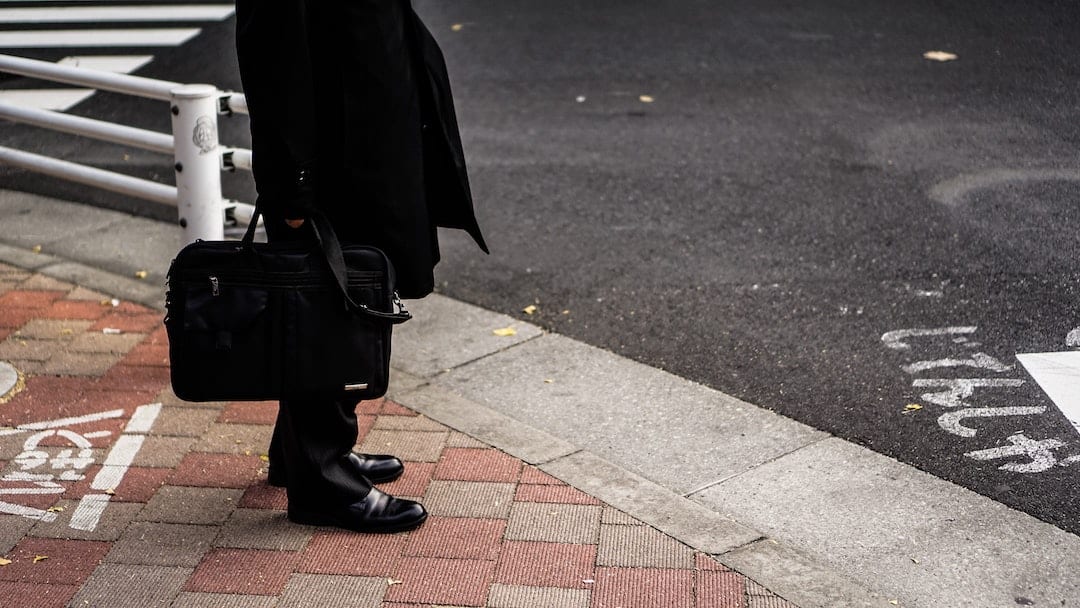No products in the cart.
September 7
Types of Employment in Japan
0 comments
“Just get a job in Japan,” the forums said. It sounds simple – apply to a Japanese company, pass the interviews, and sign your contract. But there’s a snag! What type of contract are you signing? If you value your time and you are planning on earning a living here, you should know about the different types of employment in Japan.
Before you go off and sign an employment contract in Japan, know that not all of them are created equal. Some give you a lifetime of secure employment, while others restrict what you do with your unpaid hours between shifts (?!), which is the cause of a lot of misery and grief among foreigners working in Japan. Let’s look at a breakdown of the various types of employment in Japan and how they can affect more than just your paycheck.
Ask most adult Japanese workers what they do for a living, and they will answer, “company employee.” Nevermind the vagueness of this answer (that’s another story), but it illustrates the extent to which Japanese salarymen and OLs see themselves as a cog in the machine that is their workplace. A lot of it stems from the long term commitment being made when one signs this type of contract. Traditionally it has been a guarantee of lifetime employment, though even that is slowly changing. Nevertheless, the seishain contract is the closest thing you will get to an irrevocable promise of employment, yearly raises, and a standard of living that could be called “middle class”.
The concept of the full time employee is pretty easy to wrap your head around. It’s quite similar to what constitutes a full time employee in the Western working world: a 40 hour work week, a monthly salary, benefits such as health insurance and pension (a.k.a. Social Security, for those Americans out there), automatic tax deductions, and so on. While not every company offering full time employment will offer all of these benefits, most will, and as someone who has worked in various types of classes in Japan, let me tell you that these benefits are nothing to scoff at.
See our interview with a foreign seishain working at Philip Morris Japan here.

On top of the aforementioned employment benefits, your company will also generally pay for your transportation, so don’t worry about train fare breaking the bank. If you’re really out in the sticks, they may even get you a car, though this is less common now than it once was. The very luckiest seishain employees (especially younger employees) can opt into reduced-rent accommodations that range from dormitory all the way to nice apartments. This represents a huge reduction to your monthly expenses, which can help make up for the notoriously low starting salaries in Japan.
In addition to all of the benefits and modes of transportation paid for, full time positions should always include visa sponsorship for foreigners, which is a necessity if you wish to continue living in Japan for longer than the duration of your first visa. Well established companies (Hitachi, Mitsubishi, Sony, etc.) get favorable treatment at the visa office, too, often scoring the holy grail of work visas: a 5 year renewable term. For someone looking to stay long term in Japan or just establish themselves with a safety net, this type of employment is the safest bet.
Not everything is smooth sailing with a seishain contract. In return for all the benefits and the stability, you are expected to devote yourself to the company. You are a “company employee,” and with that come expectations of late nights, company events, and working your way up the ranks by virtue of time spent with the company.
Meritocracy is slowly becoming a “thing” at some Japanese companies, but the seishain track typically sees you achieving certain levels of seniority at set years throughout your career. Look at a large Japanese household-name company and see what age the leadership team is – this is even true for the most part in tech. There are very few instances of a young upstart expert quickly establishing themselves and leading a development team, for instance.
As for the “time spent at work” part of the equation, you’ll likely be putting in more hours than you’d like. Because you put your whole career path in the hands of your employer, the power dynamic demands that you appear to be a super diligent worker-bee, often catching the last train home and never leaving before your manager. You can look forward to constant judgement from your colleagues if you take more than an extra paid day off around a weekend.
Ah yes, the contract worker. A large amount of those who venture across the sea to Japan will start out with this type of employment. A contract worker is someone that is hired to work contract to contract, usually between six months to one year, renewable. These types of employees will sometimes but not always work the same number of hours as a full time worker, but the big difference here is that you likely won’t be getting as many of the benefits. Some companies offer health insurance etc. but many more don’t, so it’s always important to clarify with your future employer.

One major difference between a contract worker and a full time employee is how your wages are determined. Depending on the company, you may be paid based on the amount of hours you worked, but sometimes you will be paid based on the amount of days in a month you worked, regardless of how many actual working hours there were. As you can imagine, pay based on days worked per month could be either a blessing or a curse, so be careful. In many cases your “hourly rate” is higher than a seishain employee, which is nice if that’s how you track success.
If you’re looking for a bit of a better work-life balance (read “I want more time to play around in Japan”) then being a contract worker is probably for you. If you do ever feel like becoming a full time employee, you will have the option at many companies to move up to seishain status, if you so choose, and if you fulfill their requirements. Be sure to check if they offer visa sponsorship and what their requirements for sponsorship are.
A lot of the negatives for this type of employment in Japan come in the form of people not establishing their boundaries or knowing their rights. Eikaiwas are notorious for hiring keiyakushain and then taking advantage of their hours, or treating them like disposable part-timers. There are countless stories of contract employees who only get paid for their “active work hours,” which don’t include the time between lessons (for example) where they are still planning or mingling with students/clients.
Because a keiyakushain contract doesn’t really bind the company to you in a long term way, they are often less invested in your success or security. When your status of residence (lots of people call this a visa) is up for renewal, you’re basically at the mercy of your manager and whether or not you will submit to another contract period with the company.
We’re all familiar with the concept of a part-time employee. Many of us had a part-time job or two in high school or college. These jobs are often taken up by housewives, students, or foreign nationals looking to make some cash during evenings and weekends. If you’re coming to Japan as a study abroad student, this might be an option for you, but make sure to check whether or not your visa allows for part-time work, or upgrade to get the necessary permit. Since a part-time job in Japan doesn’t deviate much from what constitutes a part-time job anywhere else, there’s not much else to say on the subject. That being said, be wary of part-time jobs in Japan, if only because they likely won’t offer visa sponsorship, while full time positions and contract positions often will.

You are selling your time for cash, so it’s not a complicated relationship. There’s no long term commitment so you have flexibility and freedom to move around.
You’re not likely to make a killing doing part time work, and you probably have to cover a lot of your own expenses, such as transportation. Depending on the type of work you’re doing, your employer may or may not handle your tax paperwork for you, which means you should track your income closely.
This type of employment will technically fall under one of the other employment classes, as far as you are concerned. Generally, you will start working with one company, and they will send you to another company as a sort of temporary staff. This can last all the way up to three years. Once your contract with one company is finished, you will move on to the next. The company whose offices you are working in will not be signing your paychecks, but you will more or less be their employee for the duration of your contract.
These are the main classes of jobs you’ll find in Japan. They probably seem relatively similar to job classes in your country, but as always, when moving to another country you need to be careful to do your research. Figure out what type of positions the company is offering, check what benefits the job will offer, such as health insurance, pension etc., but probably most importantly, check whether they offer visa sponsorship.

There is a lower barrier to entry to become a hakenshain, as the companies you are placed at don’t need to commit to you long term. You are also more likely to be able to jump into a mid-career role this way, at companies that normally wouldn’t hire a mid-career resource (this is common with larger Japanese companies).
You’re going to be the red-headed stepchild of whatever company you’re placed at. Is there lousy, soul crushing repetitive work that needs to be done? You can count on being assigned to that. Career advancement? Ha. Not in the cards for you.
The Japanese working world is decisively set up to push hakenshain down and keep them busy, which is likely why it’s becoming the preferred type of employment in Japan. Opportunities will be kept aside especially for seishain employees, even if the equivalent hakenshain has been at the company for the same amount of time.
If your way into the working world of Japan is as a hakenshain, try your best to graduate to a better form of employment if you can.Did you like this article? Please share it around!
Tags
Never miss a post – let us slide into your inbox with hot articles.
Session expired
Please log in again. The login page will open in a new tab. After logging in you can close it and return to this page.